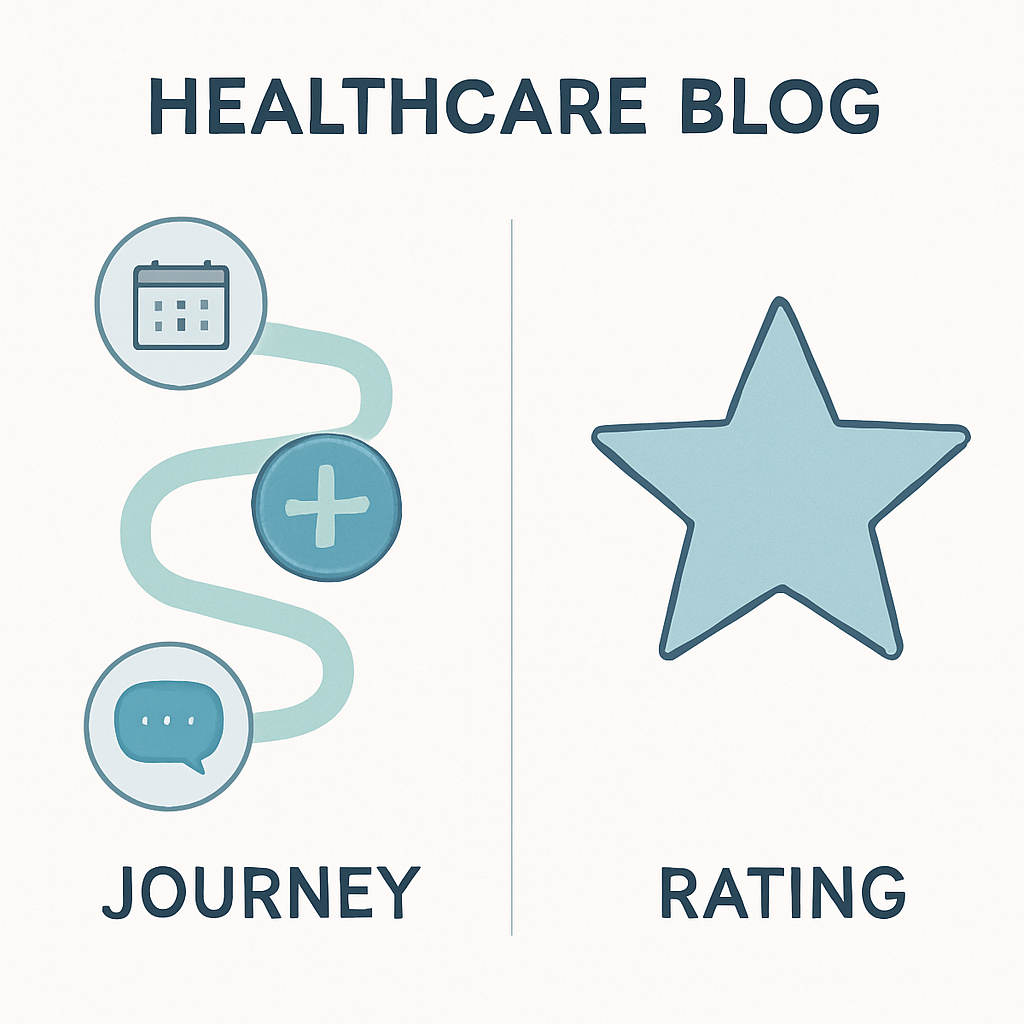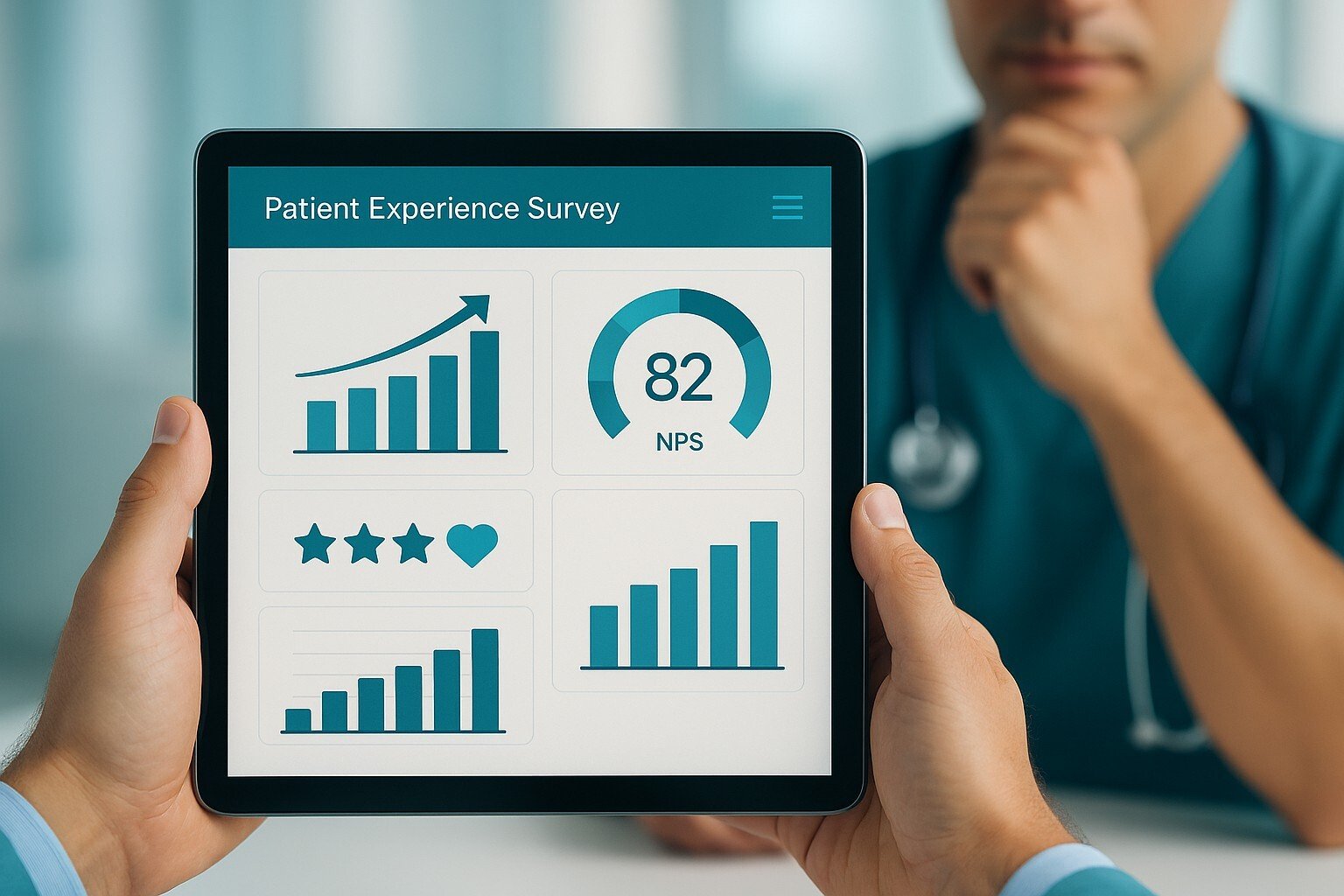15 Expert-Backed Strategies: How to Improve Patient Satisfaction & Boost Your Practice
Knowing how to improve patient satisfaction is no longer just a "nice-to-have" goal; it's the central pillar of a successful, modern healthcare...
8 min read
Alvin Amoroso : 7/24/25 7:24 PM

Knowing how to improve patient experience is no longer a secondary goal in healthcare; it's the central pillar of a successful, reputable, and thriving practice. A positive experience directly influences patient outcomes, loyalty, and your organization's bottom line. It encompasses every interaction a person has with your facility—from the initial phone call to schedule an appointment to the follow-up care they receive after a procedure. To truly improve patient experience, you must look beyond clinical excellence and focus on creating a journey that is seamless, empathetic, and empowering for every individual who walks through your doors. This guide provides 15 actionable tips to help you elevate every touchpoint of the patient journey.
Before diving into specific tips, it's crucial to understand why a dedicated focus on this area is essential. Prioritizing efforts to improve patient experience yields significant returns that extend far beyond simple satisfaction scores. A superior experience is directly linked to increased patient retention, as individuals are more likely to return to a practice where they feel valued, heard, and respected.
Furthermore, satisfied patients become your most powerful advocates. They share their positive stories with friends, family, and online, bolstering your reputation and attracting new patients. This positive word-of-mouth is invaluable in today's competitive healthcare landscape. From a clinical perspective, when you enhance patient experience, you often see better health outcomes. Patients who are more engaged in their care and have a stronger rapport with their providers are more likely to adhere to treatment plans and follow medical advice. Finally, many value-based care models tie reimbursement to patient experience metrics, meaning a better experience can directly translate to increased revenue.
Transforming the patient journey requires a multi-faceted approach. The following 15 tips are organized into key pillars, providing a comprehensive framework for creating lasting positive change in your practice.
Communication is the bedrock of the patient-provider relationship. How you communicate can either build trust or create a barrier to effective care.
To truly improve patient experience, your team must master empathetic communication. This means actively listening to patients' concerns without interruption, validating their feelings, and responding in a way that shows you understand their perspective. Train all staff, from the front desk to clinical teams, to make eye contact, use calming and reassuring language, and ask open-ended questions like, "How are you feeling about this?" instead of just rattling off clinical inquiries. When patients feel genuinely heard, their anxiety lessens and their trust in your practice skyrockets.
One of the most common patient complaints is confusion over their own health. A key way to enhance patient experience is to break down complex medical information into simple, easy-to-understand terms. Avoid overly technical jargon and use analogies or simple diagrams to explain diagnoses and treatment plans. The "teach-back" method, where you ask a patient to explain the plan back to you in their own words, is an incredibly effective tool to ensure comprehension and empower patients in their own care.
The patient experience doesn't end when they leave your office. Implementing a system for proactive follow-ups is an excellent tip to improve patient experience. This can be a simple phone call from a nurse a day or two after a significant appointment, an automated email checking in on their progress, or a secure message through a patient portal. This simple gesture shows you care about their well-being beyond the four walls of the clinic and provides a valuable opportunity to address any lingering questions or concerns.
Friction and frustration in administrative processes can sour an otherwise positive clinical interaction. A smooth, easy-to-navigate journey is essential.
The very first interaction a patient has with you is often scheduling. To improve patient experience from the start, make this process as frictionless as possible. Offering online scheduling through a user-friendly platform allows patients to book appointments at their convenience, 24/7, without playing phone tag. For those who prefer to call, ensure your phone lines are adequately staffed to minimize hold times. Providing a streamlined and modern booking system, like Curogram, sets a positive tone for the entire relationship.
The waiting room is a major source of patient anxiety and dissatisfaction. Rethink this space to be a calming transition zone rather than a holding pen. You can enhance patient experience by providing comfortable seating, free Wi-Fi, charging stations for devices, and complimentary beverages like water or tea. Consider playing calming music or nature documentaries instead of jarring daytime television. Most importantly, keep patients informed. A simple sign or a verbal update from the front desk about wait times can make a world of difference.
While a pleasant waiting room helps, the ultimate goal is to minimize time spent within it. Analyzing your patient flow to identify bottlenecks is a critical step in learning how to improve patient experience. Are there certain times of day that are consistently backed up? Does the check-in process take too long? Implementing digital check-in forms that patients can complete at home before their visit can save significant time. Staggering appointment types and building buffer time into schedules can also help prevent a domino effect of delays throughout the day.
In the digital age, technology is not a luxury but a fundamental tool for improving care delivery and patient engagement.
A robust patient portal is one of the most effective tools to improve patient experience. These portals should be more than just a place to view lab results. A top-tier patient portal allows individuals to securely message their providers, request prescription refills, view their medical history, pay bills online, and access personalized educational materials. Promoting the use of a comprehensive tool like [Your Patient Portal Software] empowers patients to take an active role in managing their health on their own time.
The pandemic accelerated the adoption of telehealth, and it's here to stay because it dramatically improves convenience and access to care. Offering telehealth appointments for follow-ups, consultations, and minor health concerns is a powerful tip to improve patient experience. It saves patients travel time and costs, reduces time off work, and allows them to receive care from the comfort of their own homes. This flexibility is a key driver of patient satisfaction in the modern era.
Supplement your verbal instructions with high-quality digital educational resources. You can enhance patient experience by sending links to informative videos, interactive web pages, or detailed PDFs via the patient portal or email after an appointment. This allows patients to review information at their own pace and share it with family members or caregivers. Catering to different learning styles with a variety of media ensures your message is received and understood.
Your staff is the human face of your practice. An engaged, empowered, and well-trained team is your greatest asset in delivering an exceptional patient experience.
Excellent patient service is a skill that needs to be developed and refined. Go beyond basic onboarding and invest in continuous training for all staff members on topics like communication, empathy, conflict resolution, and cultural competency. Role-playing different patient scenarios can be an effective way to build confidence and skill. When your team feels prepared to handle any situation with grace and professionalism, the patient experience naturally improves.
Nothing frustrates a patient more than being told, "I can't help you with that." Empower your frontline staff—receptionists, medical assistants, and schedulers—with the authority to solve common problems on the spot. Give them clear guidelines and the autonomy to make decisions up to a certain level, whether it's waiving a small fee, rescheduling a complex appointment, or finding a way to accommodate a special request. This not only resolves issues faster but also makes your staff feel more valued and engaged in their work.
Your staff has a ground-level view of the patient experience and can offer invaluable insights into what's working and what's not. Create formal and informal channels for them to provide feedback without fear of reprisal. Ask them directly: "What is the biggest frustration you hear from patients?" or "If you could change one thing to make our patients' day smoother, what would it be?" Acting on this feedback is a crucial tip for improving the patient experience because it solves problems at their source.
The final touches go beyond process and technology, focusing on the physical environment and personalization of care.
The physical atmosphere of your clinic has a subconscious effect on patients. To improve patient experience, ensure your facility is impeccably clean, well-lit, and easy to navigate with clear signage. Consider the aesthetic as well—artwork, plants, and a non-clinical color scheme can make the space feel more welcoming and less intimidating. Pay attention to details like the cleanliness of restrooms and the organization of exam rooms.
Patients are not just a collection of symptoms; they are individuals with unique lives, preferences, and goals. Personalizing their care journey shows that you see them as a whole person. This can be as simple as remembering a detail from a previous conversation, asking about their family, or tailoring their treatment plan to fit their lifestyle. This level of personalization is a cornerstone of a positive experience and builds a powerful, lasting patient-provider bond.
You cannot improve what you do not measure. To truly understand how to improve patient experience, you must systematically collect feedback through surveys like the HCAHPS (Hospital Consumer Assessment of Healthcare Providers and Systems) or Net Promoter Score (NPS). Go beyond scores and read every comment. Look for recurring themes and specific examples. Share this feedback—both positive and negative—with your entire team and use it as a catalyst for targeted quality improvement initiatives. For an in-depth look at this process, trustworthy resources like the Agency for Healthcare Research and Quality (AHRQ) provide extensive guidance.
To improve the patient experience, focus on several key areas simultaneously. Start by mastering empathetic communication and simplifying medical information. Streamline administrative processes like appointment scheduling and reduce wait times. Leverage technology such as patient portals and telehealth for convenience and engagement. Crucially, invest in continuous staff training and empower your team to solve problems. Finally, gather patient feedback systematically and use it to make targeted improvements to your practice's environment and processes.
The 4 P's of patient experience provide a simple framework for understanding its core components. They are:
The 5 P's model expands on the 4 P's by adding a fifth, crucial element:
For those aspiring to a career in healthcare, gaining patient care experience is essential. The best way to start is by volunteering at a hospital, clinic, or nursing home. Many facilities have structured volunteer programs. You can also seek entry-level paid positions like a Certified Nursing Assistant (CNA), medical scribe, or patient care technician, which often require a short certification program. These roles provide direct, hands-on experience in communicating with patients, understanding clinical workflows, and providing basic care, forming a strong foundation for a future in medicine.
Ultimately, learning how to improve patient experience is an ongoing journey, not a one-time fix. It requires a deep organizational commitment to viewing every process and interaction through the patient's eyes. By implementing these 15 tips—from enhancing communication and streamlining journeys to leveraging technology and empowering your staff—you can create a culture of excellence. When you improve patient experience, you do more than just increase satisfaction scores; you build a foundation of trust, foster better health outcomes, and solidify your reputation as a healthcare provider that truly cares.

Knowing how to improve patient satisfaction is no longer just a "nice-to-have" goal; it's the central pillar of a successful, modern healthcare...

In the complex world of healthcare, the terms "patient experience" and "patient satisfaction" are often used as if they mean the same thing. However,...

Imagine two patients leave your clinic. One felt rushed, confused by the billing, and unsure about their treatment plan. The other felt heard,...